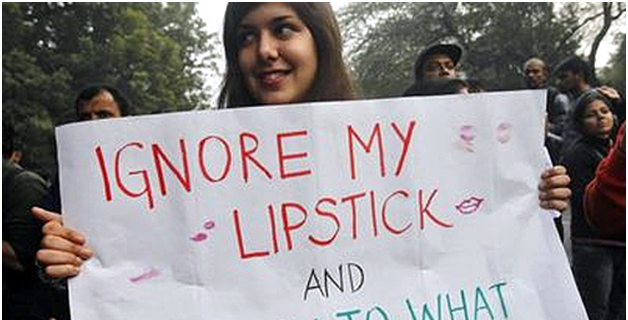Fighting Sexual Harassment at the Workplace: "How Can We Let Them Get Away?"

NEW DELHI: “I was baffled at how they feel they can get away with something like that. They feel that this is alright without actually realizing that they are talking to an actual human being,” 23 year old Mumbai journalist Binjal Shah told The Citizen.
A victim of sexual harassment at the workplace, Shah said she was covering an event at a prestigious institution in Mumbai where she met the “accused”. The “accused”, a student of the institution, was handling the press team, of which the victim was a part. Both had a brief interaction during the event.
Once the event was over, the accused decided to keep in touch and tried to become friends with Shah. All this time Shah said she was polite yet firm, telling the man that she was not interested. After this, he made sexual passes at her by sending her inappropriate messages.
Retaliating, Shah took screenshots of his inappropriate messages and uploaded it on her facebook account. Shah wrote: “There are those who will tell me that his messages were only ‘slightly’ inappropriate, and his ‘degree’ of wrongdoing doesn’t warrant this much angst. I’d just like to say that I have experienced the full range of harassment my friends.”
At first Shah, blocked the accused, however, she realized that blocking was not the answer. She unblocked him after which he started sending her lewd messages again.
To this effect Shah also wrote: “In the free cyberspace, instead of every user not exploiting that freedom and acting responsibly, which basically entails not acting like a sex-offender, why should the onus lie on me to go and tediously block creeps from my Facebook, Snapchat, Whatsapp, Twitter , Insta[gram], Vodafone and effing monitor calls from unknown numbers for the rest of my life?”(sic)
Shah has now removed this post from her Facebook account.
Shah told The Citizen that the sexual harassers feel they can get away with something like this because they are “protected by the patriarchy and the system” in this country. “There are no degrees to harassment…harassment is harassment and in the end it is only about consent.”
At first Shah filed a report with the Cyber Cell. The Cyber Cell informed her that her case is not one of “cyberstalking” because Singh gave her number to the accused and that the communication was both ways. However, Singh said as far as she was concerned it was only work related.
The Cyber Cell has transferred her case to the local police station. Shah now intends to file an FIR.
Shah says “women should report this type of harassment that takes place on the virtual space simply because they have evidence that they were harassed. Blocking someone is not the answer, getting them punished is.”
The above incident accurately paints the reality of sexual harassment faced by women at their workplace. With the increase in the number of working women in the last decade , their vulnerability to harassment has also increased.
As Minister Maneka Gandhi had highlighted in the Parliament in 2015, 526 cases of sexual harassment were reported during 2014 out of which 57 were reported at office premises and 469 cases were reported at other places reported at other places related to work.
A survey conducted by Center for Transforming India Survey shows that 88% women faced some form of sexual harassment at workplace. While crimes like rape, assault and molestation are often reported by the media, crimes considered ‘less severe’ such as unwelcome comments, lewd emails or verbal abuse are neglected because they do not qualify as criminal acts.
This suggests that sexual harassment has not gone away but has taken new forms. It instills the disturbing belief in victims that ‘they don’t have it as bad’.
The first mechanism for dealing with sexual harassment dates back to 1997 when the Supreme Court for the first time acknowledged the existence of sexual harassment in the Vishakha and others vs state of Rajasthan judgment of 1997.
The judgement, for the first time, defined unwelcome sexual behavior to include: physical contact and advances; a demand or request for sexual favours; sexually colored remarks; showing pornography; any other unwelcome physical, verbal or non verbal conduct of sexual nature.
It was mandated by the Supreme Court for the Vishakha guidelines to be followed by educational institutions and workplaces.
However despite such strict measures, there has not been much relief for working women.Cases like that of Singh’s and many more that go unreported are evidence of how sexual harassment in workplace is becoming a major obstacle for women in pursuing their dreams and goals.
While Binjal Shah is courageous and determined to seek justice for herself , there are many who are unable to stand up for themselves and suffer silently. They simply endure, what they feel cannot be cured. Who will stand up for them?



